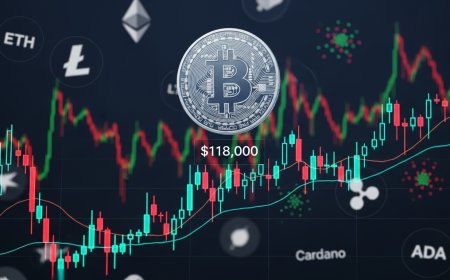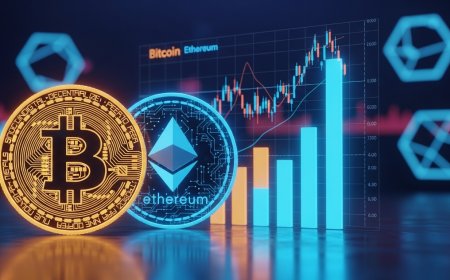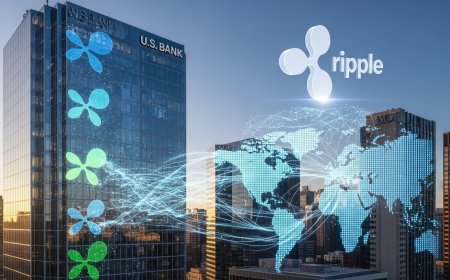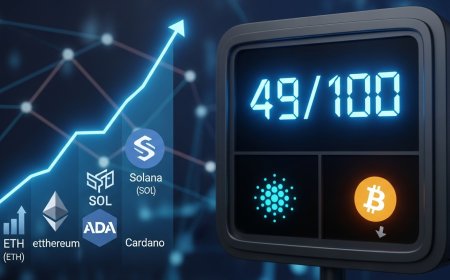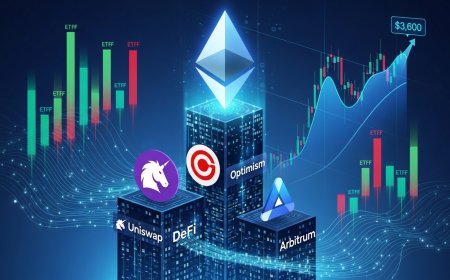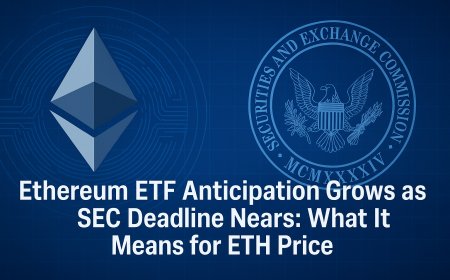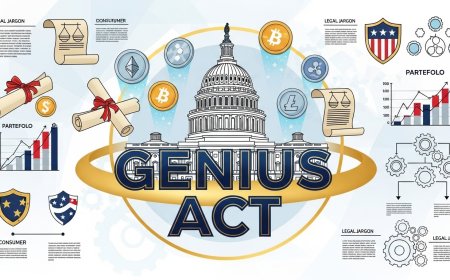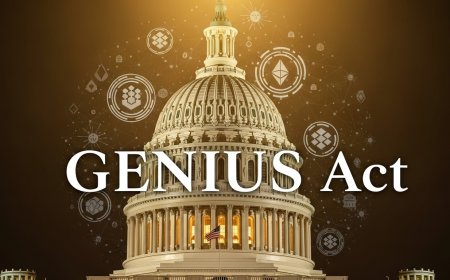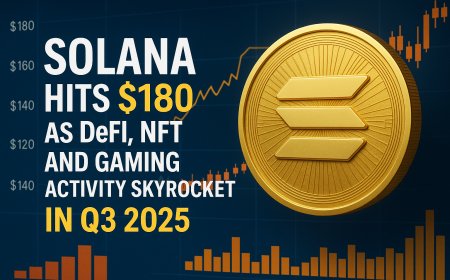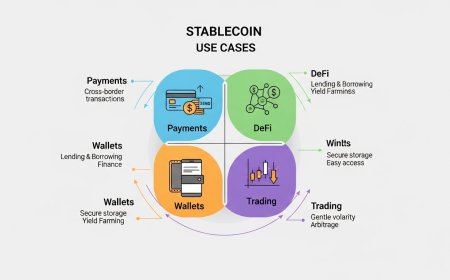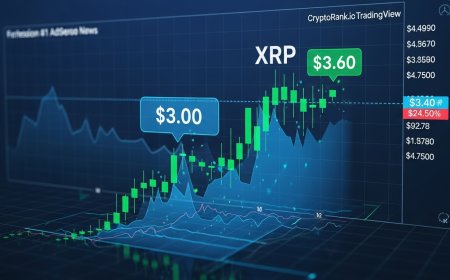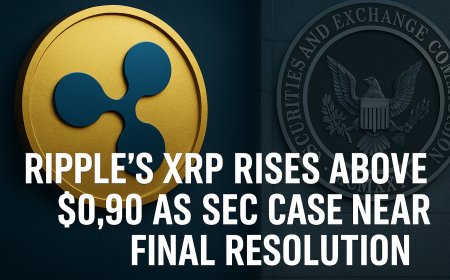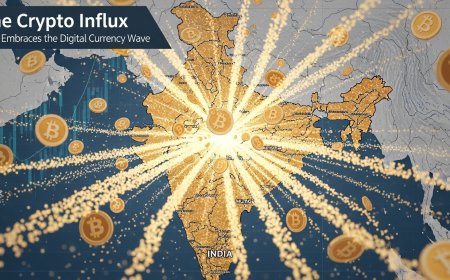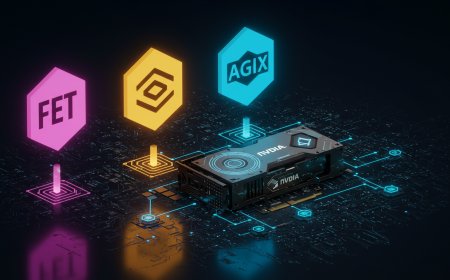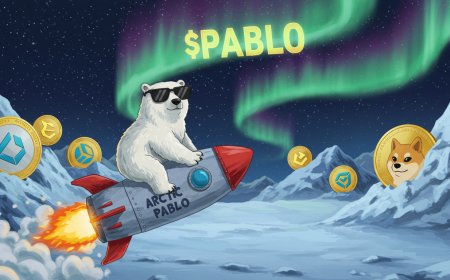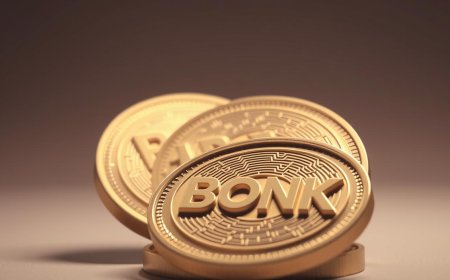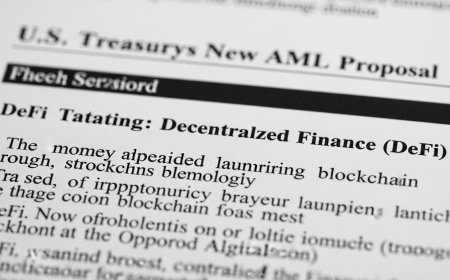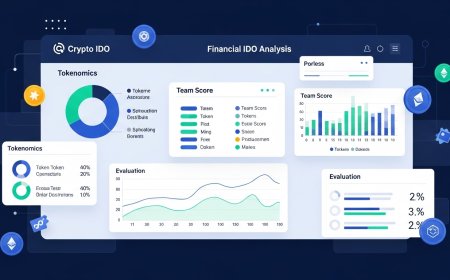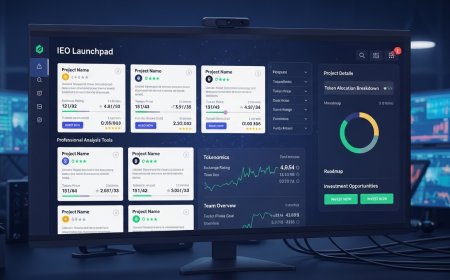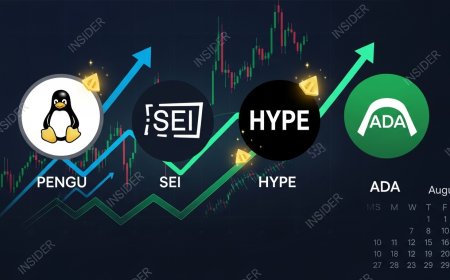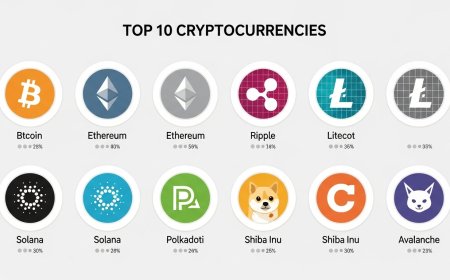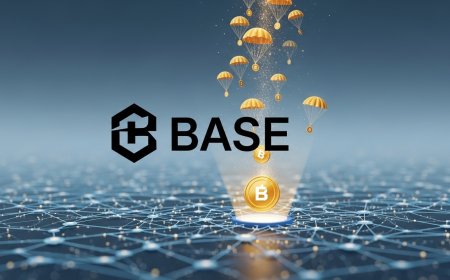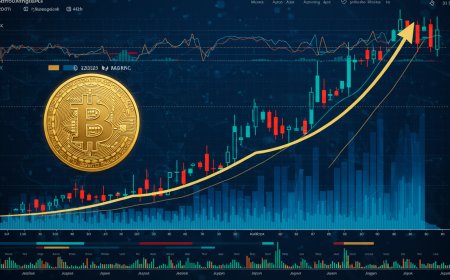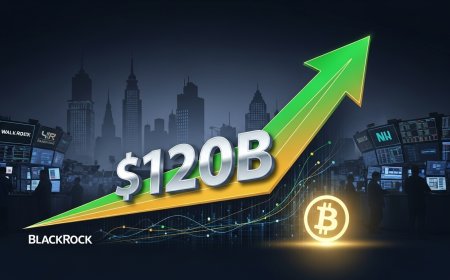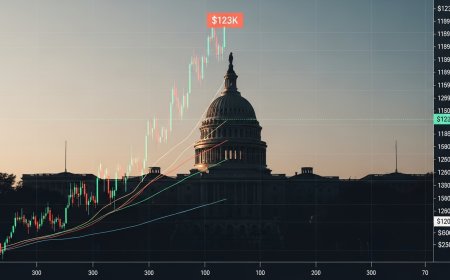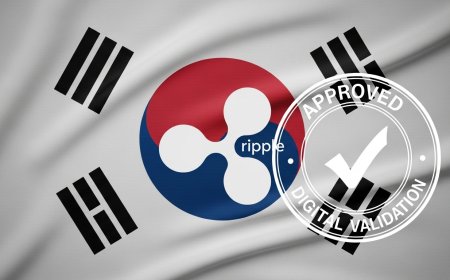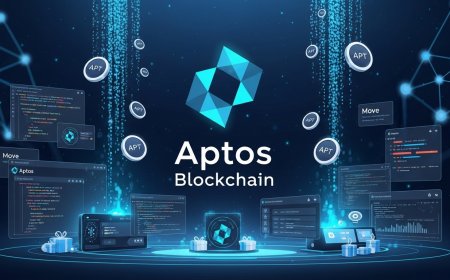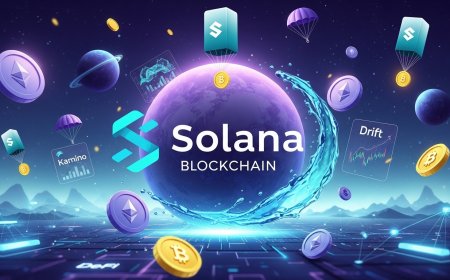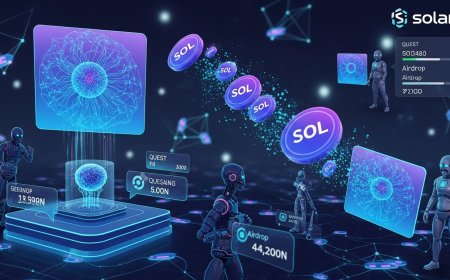Forbes Analysis: 10 Major Cryptocurrencies Gaining Attention in July 2025
Forbes Advisor outlines the top 10 cryptocurrencies for July, led by major tokens and emerging altcoins
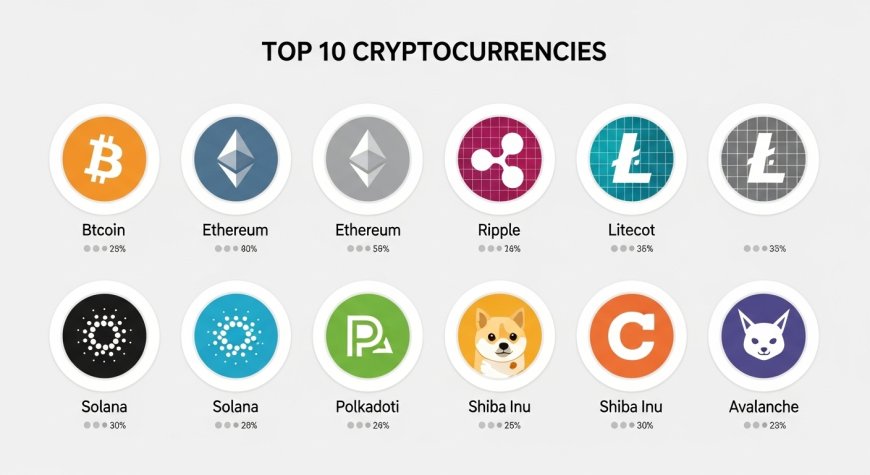
Forbes Analysis: 10 Major Cryptocurrencies Gaining Attention in July 2025
Disclaimer: This article is for educational purposes only and does not constitute investment advice. Cryptocurrency investments carry significant risks including potential total loss of capital. Always conduct thorough research and consult with qualified financial advisors before making investment decisions.
Forbes Advisor has released its analysis of ten major cryptocurrencies that are drawing significant market attention in July 2025. The report examines each digital asset's technological developments, market position, and recent performance within the broader cryptocurrency ecosystem.
1. Bitcoin (BTC) - Digital Gold Standard
Bitcoin continues to dominate cryptocurrency market discussions following its recent surge above $120,000. The world's first cryptocurrency maintains its position as the primary store of value in the digital asset space, with institutional adoption continuing to grow through exchange-traded funds and corporate treasury allocations.
Recent developments include the Lightning Network's expanding payment capabilities and ongoing improvements to Bitcoin's scalability solutions. Mining infrastructure has also evolved, with increased focus on renewable energy sources and improved efficiency metrics.
Market analysts note Bitcoin's reduced correlation with traditional risk assets, supporting its narrative as a digital store of value. However, the cryptocurrency remains subject to significant volatility and regulatory considerations that potential investors should carefully evaluate.
2. Ethereum (ETH) - Smart Contract Platform Leader
Ethereum maintains its position as the dominant smart contract platform, hosting the majority of decentralized applications (dApps) and decentralized finance (DeFi) protocols. The network's transition to proof-of-stake consensus has improved energy efficiency while maintaining security standards.
Recent upgrades have focused on scalability improvements and transaction cost reductions. Layer 2 solutions built on Ethereum continue to gain adoption, addressing network congestion issues that have historically limited mainstream usage.
The platform's extensive developer ecosystem and established network effects provide competitive advantages, though emerging blockchain platforms continue to challenge Ethereum's dominance with alternative approaches to scalability and functionality.
3. Binance Coin (BNB) - Exchange Ecosystem Token
Binance Coin serves as the native token for the Binance ecosystem, which includes the world's largest cryptocurrency exchange by trading volume. The token provides utility within the Binance Smart Chain network and offers trading fee discounts for exchange users.
The BNB ecosystem has expanded beyond exchange functionality to include decentralized finance applications, non-fungible token (NFT) marketplaces, and various blockchain services. This diversification has increased the token's utility and potential demand drivers.
Regulatory challenges facing Binance in various jurisdictions represent ongoing risk factors that market participants should monitor. The company's compliance efforts and regulatory relationships continue to evolve across different markets.
4. Cardano (ADA) - Academic Blockchain Approach
Cardano distinguishes itself through its academic, peer-reviewed approach to blockchain development. The platform emphasizes sustainability, scalability, and interoperability while maintaining a focus on emerging market applications.
Recent developments include smart contract functionality implementation and ongoing work on governance mechanisms that allow token holders to participate in network decisions. The platform's research-driven methodology aims to address scalability challenges facing other blockchain networks.
Cardano's adoption in developing markets, particularly in Africa, represents a key differentiator from other smart contract platforms. However, the platform faces competition from more established ecosystems with larger developer communities and application volumes.
5. Solana (SOL) - High-Performance Blockchain
Solana has gained attention for its high-throughput blockchain architecture, capable of processing thousands of transactions per second at low costs. The platform has attracted significant developer interest and hosts a growing ecosystem of decentralized applications.
The network's proof-of-history consensus mechanism and parallel processing capabilities differentiate it from other smart contract platforms. These technical innovations have enabled applications requiring high transaction throughput, including decentralized exchanges and gaming platforms.
Network stability concerns have emerged periodically, with temporary outages affecting user confidence. The platform's technical team continues to address these challenges while maintaining focus on performance optimization.
6. XRP (XRP) - Cross-Border Payment Solution
XRP was designed specifically for cross-border payments and remittances, offering fast settlement times and low transaction costs. The token serves as a bridge currency in Ripple's payment network, which targets financial institutions and payment providers.
Ongoing legal proceedings between Ripple and the Securities and Exchange Commission have created regulatory uncertainty that affects market sentiment. The outcome of these proceedings may significantly impact XRP's future adoption and market position.
Despite regulatory challenges, Ripple continues to expand its payment network internationally, particularly in markets with less restrictive regulatory environments. The company's focus on institutional partnerships differentiates it from consumer-focused cryptocurrency applications.
7. Dogecoin (DOGE) - Meme Coin with Mainstream Appeal
Dogecoin began as a meme-based cryptocurrency but has evolved into a widely recognized digital asset with significant market capitalization. The token benefits from strong community support and mainstream cultural recognition.
Recent developments include improved transaction efficiency and ongoing work on network security enhancements. The cryptocurrency's simplicity and low transaction costs have enabled various payment applications and charitable initiatives.
Market volatility remains a significant characteristic of Dogecoin, with price movements often influenced by social media sentiment and celebrity endorsements. This volatility pattern differs from fundamental analysis approaches used for other cryptocurrencies.
8. Avalanche (AVAX) - Scalable Blockchain Platform
Avalanche positions itself as a high-performance blockchain platform capable of supporting thousands of decentralized applications. The network's consensus mechanism aims to provide fast finality while maintaining decentralization and security.
The platform's subnet architecture allows for customized blockchain networks tailored to specific use cases, potentially attracting enterprise and institutional applications. This flexibility represents a key competitive advantage in the smart contract platform space.
Developer adoption and ecosystem growth remain important metrics for Avalanche's long-term success. The platform competes with established networks while seeking to differentiate through technical performance and customization capabilities.
9. Chainlink (LINK) - Oracle Network Infrastructure
Chainlink operates as a decentralized oracle network that connects blockchain smart contracts with real-world data sources. This infrastructure role positions the token as essential for many decentralized applications requiring external data feeds.
The network's oracle services support various blockchain platforms, creating potential demand from the broader cryptocurrency ecosystem. Recent developments include expanded data sources and improved security mechanisms for oracle operations.
As smart contract adoption grows across different blockchain networks, oracle services like Chainlink may benefit from increased demand for reliable data connectivity. However, the sector faces competition from alternative oracle solutions and integrated blockchain approaches.
10. Polygon (MATIC) - Ethereum Scaling Solution
Polygon operates as a Layer 2 scaling solution for Ethereum, providing faster and cheaper transactions while maintaining compatibility with the Ethereum ecosystem. The network has attracted significant developer interest and hosts numerous decentralized applications.
Recent developments include zero-knowledge proof implementations and improved interoperability features. These technical advances aim to address scalability challenges while maintaining security standards comparable to the main Ethereum network.
The platform's success depends partly on Ethereum's continued dominance in smart contract applications, as well as Polygon's ability to compete with other Layer 2 solutions and alternative blockchain platforms.
Market Analysis and Trends
The July 2025 cryptocurrency market reflects several key trends influencing digital asset attention and adoption. Regulatory clarity in major markets has reduced uncertainty for institutional participants, while technological improvements across various blockchain platforms have enhanced user experiences.
Institutional adoption patterns show increased diversification beyond Bitcoin, with smart contract platforms and specialized blockchain networks attracting professional investor interest. This trend suggests maturation in how institutional investors approach cryptocurrency portfolio construction.
Decentralized finance applications continue to drive demand for various blockchain platforms, with users seeking alternatives to traditional financial services. This application category represents a significant driver of cryptocurrency utility and adoption.
Risk Considerations and Market Dynamics
Cryptocurrency markets remain characterized by high volatility and regulatory uncertainty. Market participants should understand that digital asset prices can experience rapid and significant fluctuations based on various factors including regulatory developments, technological changes, and market sentiment.
Technological risks include potential security vulnerabilities, network congestion, and scalability challenges that could affect individual blockchain platforms. These technical considerations may impact the long-term viability and adoption of specific cryptocurrencies.
Regulatory environments continue to evolve across different jurisdictions, potentially affecting cryptocurrency operations, taxation, and market access. Changes in regulatory approaches could significantly impact market dynamics and individual token performance.
Global Adoption and Infrastructure Development
International cryptocurrency adoption continues to expand, with various countries implementing frameworks for digital asset integration into their financial systems. This global trend supports long-term demand for established cryptocurrencies while creating opportunities for specialized applications.
Infrastructure development, including improved custody solutions, trading platforms, and payment systems, has reduced operational barriers for cryptocurrency adoption. These developments support mainstream integration while maintaining security standards.
Cross-border payment applications represent a significant growth area, with several cryptocurrencies positioned to address inefficiencies in traditional international transfer systems. This use case demonstrates practical utility beyond speculative trading applications.
Technology Innovation and Future Developments
Blockchain technology continues to evolve, with innovations in consensus mechanisms, scalability solutions, and interoperability features. These developments may influence competitive dynamics among different cryptocurrency platforms and applications.
Integration between traditional finance and cryptocurrency systems is expanding, with various financial institutions exploring digital asset services and blockchain-based solutions. This integration trend may accelerate mainstream adoption while maintaining regulatory compliance.
Environmental considerations are increasingly influencing cryptocurrency development, with platforms focusing on energy efficiency and sustainability. These considerations may affect long-term adoption patterns and regulatory approaches.
Important Investment Disclaimers:
Risk Warning: Cryptocurrency investments carry substantial risk of loss. Digital assets are highly volatile and speculative investments that may not be suitable for all investors. Past performance does not guarantee future results.
Educational Purpose: This analysis is provided for educational and informational purposes only. It does not constitute investment advice, financial advice, or recommendations to buy, sell, or hold any specific cryptocurrencies.
Professional Advice: Readers should conduct their own research and consult with qualified financial advisors before making any investment decisions. Consider your risk tolerance, investment objectives, and financial situation before investing in cryptocurrencies.
Regulatory Risks: Cryptocurrency regulations vary by jurisdiction and continue to evolve. Changes in regulations could significantly impact the value and legal status of digital assets.
What's Your Reaction?
 Like
0
Like
0
 Dislike
0
Dislike
0
 Love
0
Love
0
 Funny
0
Funny
0
 Angry
0
Angry
0
 Sad
0
Sad
0
 Wow
0
Wow
0
